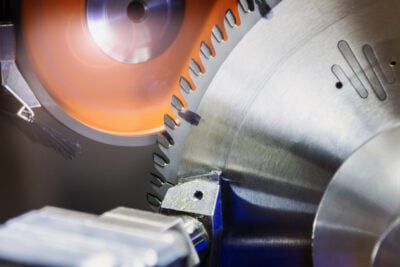Eagle’s engineers can formulate resin bond wheels in numerous grades and hardnesses. Our diamonds also come in multiple grit sizes and offer different coarseness options. 60/80 mesh is the coarsest, whereas a 2,000-grit will offer a mirror finish for saw blades or plastics. We commonly manufacture grits as fine as 1,000-1,200, however, we can manufacture up to 2,000 for specialty applications.
A finer grit wheel offers a smoother finish on carbide saw blades. It also lengthens the life between sharpening, improves the quality of the cut, and requires less power than saws with rough grinds, but a finer grit also means that material cannot be removed as quickly. When grinding saw blades, you want to eliminate as much lateral movement as possible. Make sure the blade is clamped close to the tip being ground. Pushing a wheel too hard can cause issues with deflection in the machine or cause the wheel to push off the tip. Using a wheel too hard for the type of infeed and material removal can also cause the same issue. It is important to have a conversation with an engineer to carefully select the formula that will work best for your operation.





